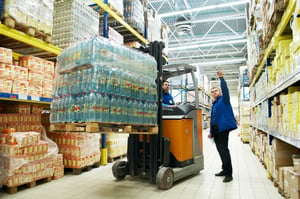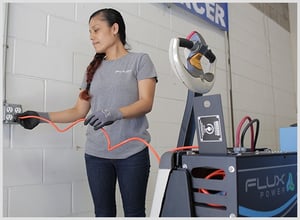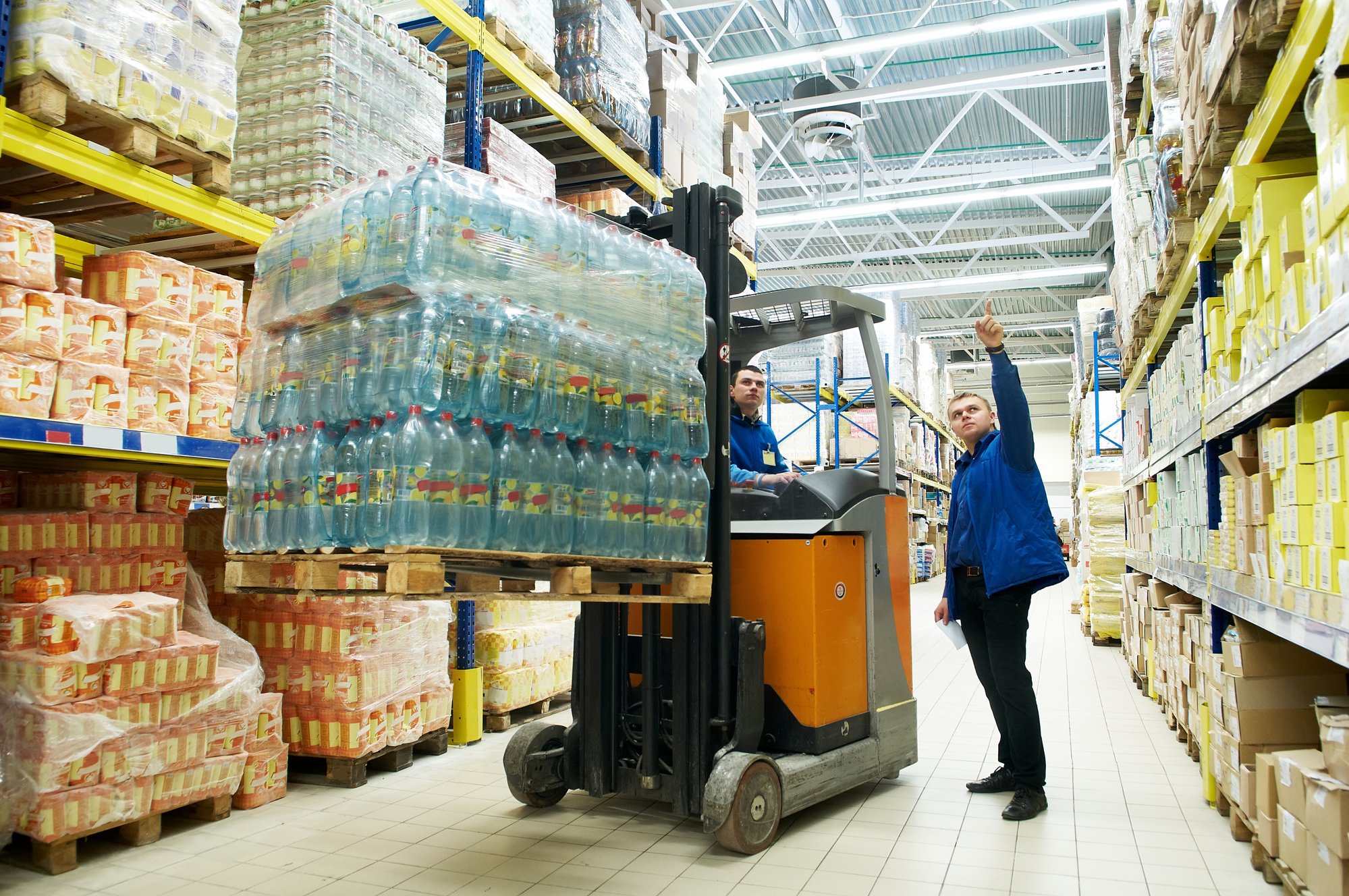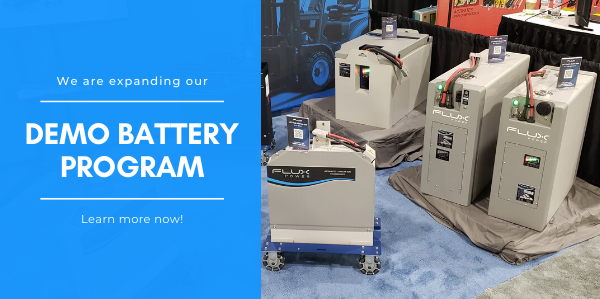For companies experiencing a change in workload due to the coronavirus pandemic, it can be difficult in the current climate to know whether purchasing a lithium-ion forklift battery is a good investment for the future.
With its advanced technology, the lithium-ion forklift battery is changing how businesses operate. Lithium-ion batteries offer an opportunity for businesses to increase the efficiency of their operations whether they are ramping up production or experiencing a drop in production.
This has made it an excellent power source during a time when each company may be experiencing a change in workload differently and are in need of a customized approach to improving productivity and the bottom line.
Here’s why.
An Important Tool For Ramping Up Production
 The COVID-19 crisis has caused a number of shortages in goods nationwide. As companies work to ramp up production in order to get products to market quickly, lithium-ion batteries have served as an important tool in making this happen.
The COVID-19 crisis has caused a number of shortages in goods nationwide. As companies work to ramp up production in order to get products to market quickly, lithium-ion batteries have served as an important tool in making this happen.
As part of a production increase, some companies have moved their operations from a single shift to multiple shifts, while other companies are using their forklifts more frequently over the course of a shift.
In either of these scenarios, lithium-ion batteries have helped the adjustment to higher workloads go more smoothly and with less downtime.
That’s because:
- Lithium-ion batteries have a 25% longer run time than lead acid batteries. Lithium-ion batteries can also be safely discharged down to 20% capacity, whereas lead acid can only be safely discharged down to 30%. This keeps forklifts powered by lithium-ion batteries in service longer, which is the key to maintaining productivity.
- Lithium-ion batteries can be charged in just 1 to 2 hours AND opportunity charged for 15 or 30 minutes without permanent damage to the cell’s capacity. This helps employees keep batteries in service longer by charging the battery in between shifts or while employees are on break.
- Lithium-ion batteries require much less maintenance. With little time for maintenance, more warehouse and manufacturing operations are looking for options that allow them to redirect their crews toward moving products, rather than maintaining batteries. Lithium-ion batteries do not have to be “watered,” unlike lead acid batteries that have electrolyte levels that must be regularly checked, usually once per week.
Employees must also regularly check lead acid batteries to:
- Ensure water levels to do not drop below the top of the lead plates (about every 10 charge cycles)
- Check the water to make sure it is between 5 and 7 on the pH scale
- Ensure enough space is left for the liquids inside to expand
- Equalize the cells regularly and ensure temperatures are controlled throughout the charging process
- Lithium-ion batteries have a simpler charging process. Any type of downtime can be costly, so using a battery that includes a simpler (and quicker) charging process can assist with getting a battery back into service.
 To charge a lithium-ion battery:
To charge a lithium-ion battery:
- A forklift operator simply drives to the charger.
- Leaving the battery in the forklift, the driver connects the lithium-ion battery to the charger
- Because a lithium-ion battery can be opportunity charged, the forklift operator can charge the battery while on break or at the end of a shift.
- After the battery is charged, which typically takes just 1 to 2 hours for a full charge, the operator disconnects the battery from the charger and can immediately resume work.
The charging process for a lead acid battery is more complicated and time consuming:
- A forklift operator must drive the forklift to a designated battery charging room.
- Special lifting equipment must be used to remove the lead acid battery from the forklift and place it on a storage rack where the charging will take place.
- The charging process lasts approximately 8 hours.
- Afterward, the battery will either remain where it was charged or transport it to a designated cooling area to cool down for another 8 hours.
This time-consuming process of charging a lead acid battery interrupts workflow because if an operator wants to continue to use that piece of equipment, another battery must be installed, which takes approximately 15 minutes. This reduces productivity at a time when warehouse managers strive to keep productivity at an all-time high. It also means that another battery must be purchased and on hand to install in the forklift.
Lithium-ion batteries, on the other hand, help businesses that have ramped up production by keeping forklifts in service longer and allowing warehouse managers to utilize their employees more efficiently in order to meet production demands.
Reducing Costs During A Drop In Workload
Although some companies are ramping up their production in response to demands caused by the coronavirus, others have seen a drop in workload.
Waiting for production levels to resume can be frustrating, especially since there is a lot of uncertainty surrounding what the remaining part of this year will look like. Even during a drop in workload, however, lithium-ion batteries have changed how businesses adapt during this time.
Drop In Maintenance Requirements
Lithium-ion batteries do not require regular maintenance. This means companies can reduce costs by not needing staff or a 3rd party service provider for battery maintenance.
This reduction in maintenance is also beneficial should a company have to store batteries until production levels pick back up. Lead acid batteries require ongoing maintenance, even in storage, whereas lithium-ion batteries can be protected by simply turning off the battery.
You can read more about this in our article, Protecting Your Forklift Battery Life When Workload Drops.
Unnecessary Square Footage Eliminated
Companies can also use this time to reclaim square footage by swapping out lead acid batteries for lithium-ion batteries.
When a business uses lead acid batteries to power their equipment, they must dedicate space for the charging and cooling processes. This is because of the long charging process time for charging and cooling and the fact that lead acid batteries also have the potential to leak explosive gas when they reach their peak charge.
By swapping out lead acid batteries for lithium-ion batteries, a company can use the space that is currently dedicated to the charging and cooling of lead acid batteries for another purpose.
If a company needs to increase revenue, it can lease out that part of the building. The company could also potentially downsize to a smaller facility to reduce costs.
Planning For The Future
Whether your company has experienced a surge in workload or a drop in workload due to the coronavirus pandemic, planning for the future is important for long-term growth.
For companies that want to boost productivity and reduce their costs, lithium-ion batteries may be the right solution.
Those who are currently not using lithium-ion batteries in their fleets may want to take advantage of an opportunity to plan for the future. Trying out a demo battery allows you to see a lithium-ion battery in action and get a better idea of how it may benefit your operation.












